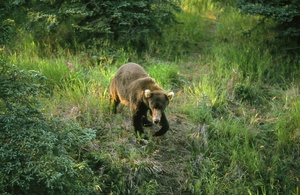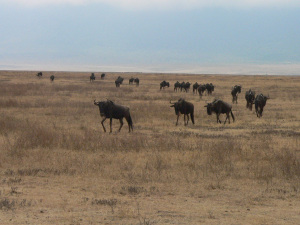Just as humans need roads and highways to move between home and work, animals, especially carnivores and larger mammals (but also, famously, insects such as monarchs), need protected corridors for migration, breeding, and finding food and water. These Wildlife Movement Corridors have become a vital tool for ensuring the survival of many species.
 Image from SummitCountyVoice.com
Image from SummitCountyVoice.com
For decades, the standard approach to wildlife conservation around the world was to set aside large blocks of land that were then safeguarded from development and over-hunting. While these areas—from Yellowstone in the U.S. to the Serengeti in Africa—are vital as core habitat for thousands of species, biologists slowly realized wildlife could not exist in isolation.
In the U.S., for example, we learned that animals such as mountain lions, bighorn sheep, black and grizzly bears, elk, and many other large herbivores and carnivores regularly move between mountain ranges and other designated protected landscapes. This movement prevents inbreeding, allows escape from drought or fire-stressed environments, and lets animals follow seasonal changes in grazing or hunting.
 Black bear in Arizona (photo, (c) Sky Island Alliance)However, these corridors often cross unprotected land that is developed or in danger of being developed; roadkill, conflict with humans and pets, and exposure to diseases are just a few hazards. By identifying where animals move, potential conflict can be mitigated or eliminated altogether.
Black bear in Arizona (photo, (c) Sky Island Alliance)However, these corridors often cross unprotected land that is developed or in danger of being developed; roadkill, conflict with humans and pets, and exposure to diseases are just a few hazards. By identifying where animals move, potential conflict can be mitigated or eliminated altogether.
Corridors can be narrow, short, and discrete, such as the drainages identified as pathways between sky island mountain ranges in the American Southwest, or they can be broad, long, and ill-defined: GPS collars have shown elephants wandering between the Masai Mara and Amboseli in Kenya—a 140-mile trek. The most famous migration on earth, the massive wildebeest drive to follow the seasonal East African rains and grass, crosses the international border between Tanzania and Kenya on a 30-mile-wide front.
In Africa as well as Arizona, conservationists are using techniques ranging from those GPS collars down to simple track surveys to determine the extent of wildlife movement corridors, then employing solutions varying from land-use planning and zoning and land swaps, to eco-tourism development and establishment of private conservation areas, to ensure unhindered movement for the large animals that remain our most charismatic ambassadors for wildlife conservation.

For more about a current Wildlife Movement Corridor project in the U.S., see:
http://summitcountyvoice.com/2010/04/26/congress-to-consider-wildlife-corridor-preservation-bill/
In Arizona and Mexico, the Sky Island Alliance has a corps of hundreds of trained "citizen scientist" volunteers who monitor wildlife movements along corridors between sky island mountains. ConserVentures' helped teach a tracking workshop at El Aribabi in spring 2011 (photo gallery). SkyIslandAlliance.org
And in Kenya, the South Rift Association of Land Owners, and their South Rift Game Scouts (supported by ConserVentures' Resources for Rangers program): http://www.soralo.org/game-scouts/
